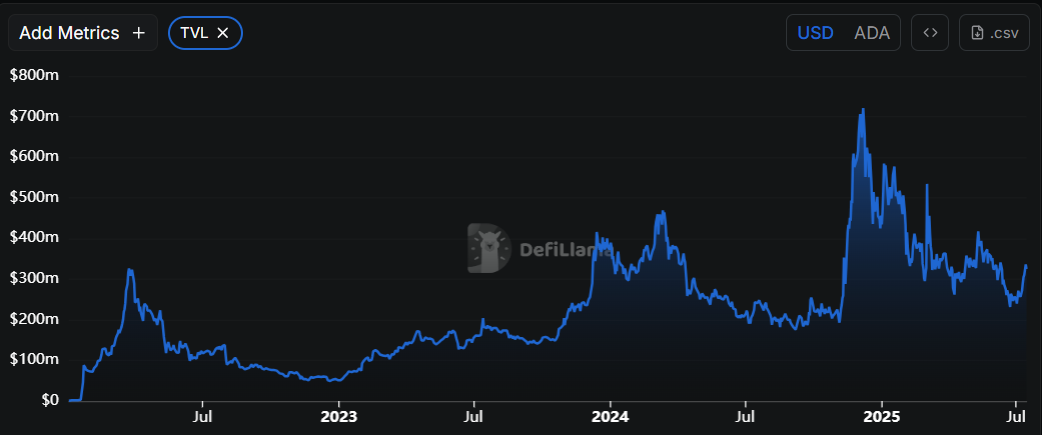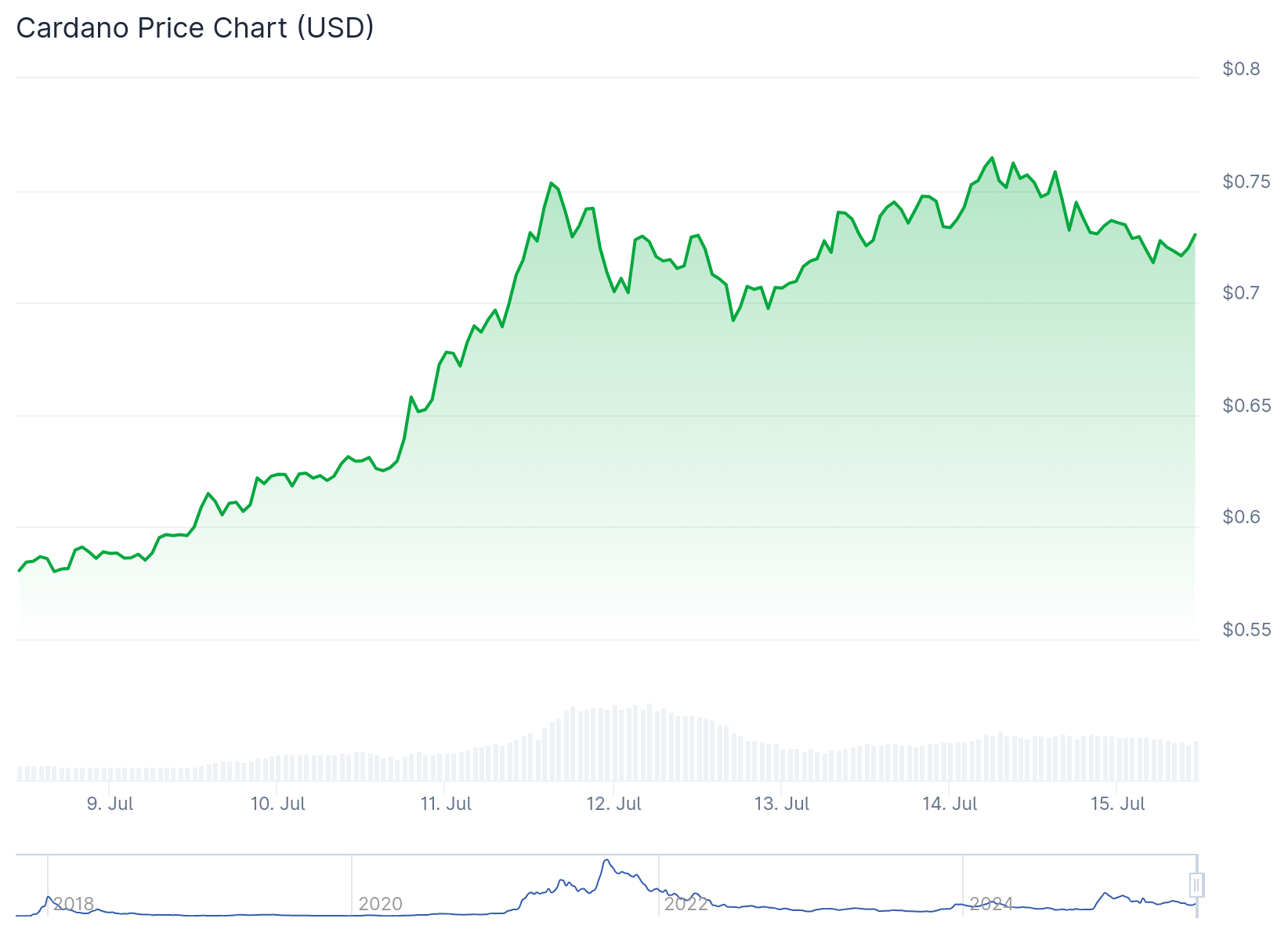TLDR
- Cardano’s Total Value Locked (TVL) in DeFi surpassed $2.2 billion in 2025, showing increased developer and user activity
- The blockchain uses energy-efficient Proof-of-Stake consensus and research-driven development approach
- ADA has a capped supply similar to Bitcoin and maintains partnerships with major institutions
- Development pace remains slower than competitors like Ethereum and Solana due to academic-first approach
- Platform supports growing DeFi protocols, NFTs, staking rewards, and governance participation
Cardano has achieved a major milestone in 2025 with its decentralized finance (DeFi) ecosystem surpassing $2.2 billion in Total Value Locked (TVL). This represents growing developer and user activity on the blockchain platform founded by Ethereum co-founder Charles Hoskinson.

The achievement comes as Cardano continues to expand its suite of decentralized applications across DeFi, NFTs, and other blockchain services. The platform’s research-driven development approach has attracted institutional partnerships and a globally distributed community of supporters.
Cardano operates on the Ouroboros Proof-of-Stake consensus mechanism, which consumes less energy than traditional Proof-of-Work systems like Bitcoin. This environmental sustainability factor has become increasingly important as institutions evaluate blockchain platforms for long-term adoption.
The blockchain’s methodical approach to development involves peer-reviewed academic research before implementing new features. All upgrades undergo scientific rigor and error-checking processes, which supporters argue provides better security and scalability foundations.
ADA, Cardano’s native token, has a fixed supply cap similar to Bitcoin’s scarcity model. This capped supply structure is viewed by some investors as a factor that could influence long-term price dynamics.

The platform now supports various DeFi protocols allowing users to lend, borrow, and trade cryptocurrencies. Users can also create, trade, and manage native tokens and non-fungible tokens (NFTs) directly on the network.
Growing Ecosystem and Applications
Cardano’s staking mechanism allows ADA holders to earn rewards while participating in network governance decisions. This gives token holders direct input on protocol upgrades and network changes.
The blockchain has formed partnerships with academic institutions, governments, and major organizations to explore real-world applications. These collaborations focus on areas like supply chain tracking, identity verification, and financial services.
Last week, we published our 2024 Financial Insights Report.
Let's take a closer look at our financials: 🧵 https://t.co/n8ZAY0q1k6 pic.twitter.com/zezVkVDMGP
— Cardano Foundation (@Cardano_CF) July 14, 2025
Recent technical developments include increased smart contract adoption and deployment of zero-knowledge smart contracts. These features expand the platform’s capabilities for privacy-focused applications and complex decentralized services.
Competitive Challenges
Despite the ecosystem growth, Cardano faces intense competition from established platforms like Ethereum and faster-moving alternatives like Solana and Avalanche. These competitors often deploy new features more rapidly than Cardano’s research-first methodology allows.
The academic approach to development, while praised for thoroughness, has historically resulted in slower feature rollouts. This has led to lower adoption rates in some areas compared to more aggressive blockchain platforms.
Market volatility remains a constant factor for ADA and all cryptocurrency investments. Price movements often reflect market sentiment rather than fundamental technological progress or adoption metrics.
Regulatory uncertainty continues to affect the broader cryptocurrency sector, with potential impacts on Proof-of-Stake networks and token classifications. Future regulatory decisions could influence how platforms like Cardano operate and how tokens are traded.
The Total Value Locked milestone of $2.2 billion represents increased confidence from developers and users choosing to build and invest in Cardano’s ecosystem throughout 2025.
Final Thoughts
Cardano’s $2.2 billion DeFi milestone in 2025 is a clear sign that the platform is gaining serious traction, even if its growth path has been more measured than some of its competitors. Its commitment to peer-reviewed development, energy efficiency, and a robust proof-of-stake model continues to attract a growing community of users, developers, and institutions. While the platform’s slower rollout of features may deter short-term speculators, its strong technical foundations and real-world partnerships position it as a serious contender in the long game. If you’re asking, “Is Cardano a good investment?”—the answer may depend on your time horizon and belief in quality over speed.






